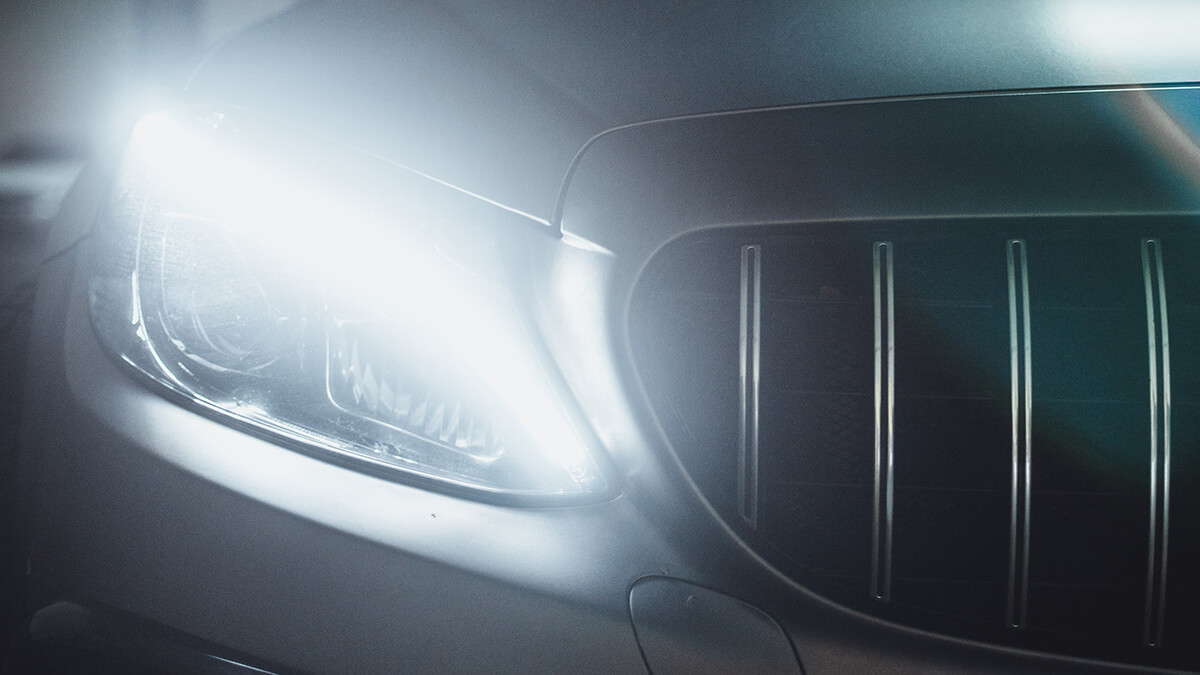White or Yellow? Which Headlight Color Is Better?
Yellow headlights
For decades, headlights were equipped with a yellow tint. The earliest headlights relied on acetylene lamps, which emitted a yellower light compared to the headlights we have today. As electric headlights gained popularity, the preference for yellow light emerged. During the 1930s, selective yellow light became prevalent in headlights. These lights were specifically designed to filter out blue tones, resulting in a yellower light. Studies conducted at that time indicated that yellow light was less dazzling to other drivers, making it a safer choice for headlights. Moreover, yellow light had the advantage of cutting through rain, snow, and fog more effectively than white or blue light.
While yellow headlights remained popular for many decades, most countries allowed for either yellow or white headlights, with the exception of France. From 1936 until 1993, French law required vehicles to have yellow headlights. Nowadays, most countries permit either white or yellow headlights. However, yellow lights have gradually lost popularity as primary headlights. Although yellow light improves visibility in wet or foggy conditions, it can hinder visibility in clear conditions. Consequently, modern vehicles often use yellow lights exclusively as fog lights.
White headlights

White headlights have become the most popular choice for cars today. In numerous countries, regulations dictate that headlights must be white, prohibiting the use of yellow lights. This requirement is also seen in European regulations, which mandate white headlights for all newly manufactured vehicles.
The preference for white light stems from its ability to mimic sunlight, resulting in improved visibility. Unlike selective yellow light, which filters and dims the brightness of headlights, white light remains unfiltered and therefore brighter.
As headlight technology advances, some bulbs lean towards the blue end of the color spectrum, as opposed to yellow. Xenon HID bulbs, for example, are brighter than traditional halogen bulbs and often feature a blue tint. While this is acceptable to a certain extent, excessively blue headlights are less effective.
For optimal headlight color, pure white is the ideal choice. When looking for white headlight bulbs, it's crucial to take the color temperature into account. Halogen bulbs usually have a Kelvin rating of around 4000K, while xenon HID or LED bulbs have a rating of approximately 5500K, guaranteeing the brightest and whitest illumination possible.
Related Articles
Proper Orientation for LED Headlight Bulbs
One of the most commonly asked questions is regarding the correct orientation for LED headlight bulbs. Unlike halogen bulbs that emit light in all directions, LEDs are directional light sources. Incorrect positioning can result in poor output and ...Complete Step-by-Step Guide: Installing Headlight or Fog Light LED Conversion Kit
All vehicles that come equipped with halogen headlight bulbs can be upgraded to LED conversion. The primary benefit is a substantial improvement in road illumination, leading to enhanced safety during nighttime driving. We offer three series of LED ...Troubleshooting Guide: How to Fix Unfocused 9007/9004 LED Bulbs
Problem: The high beam of your 9007 or 9004 LED bulb is not focused. Solution: Check for compatibility: Ensure that you have the upgraded 9007/9004 LED bulb optic design. This design addresses the issue of scattered high beam. Verify the bulb type: ...How to Install an LED Headlight Outside the Dust Cover with a Replacement Cover and Extension Wire Harness
Most newer vehicles come with a dust cover in the back of the headlight housing. These covers play a vital role in protecting headlight bulbs from moisture and debris. However, when installing LED replacement bulbs, you may encounter fitment issues ...Adjusting Mounting Tab & Bulb Base: A Step-by-Step Guide
Before you begin, check that your LED headlight bulbs are properly oriented after installation. If you haven't already, check out our guide to the Proper Orientation for LED Headlight Bulbs for detailed, step-by-step instructions. If your headlight ...